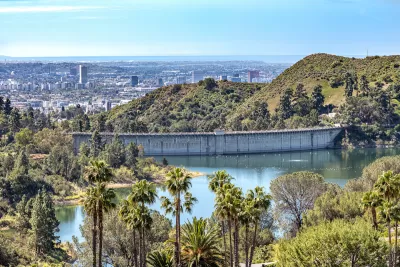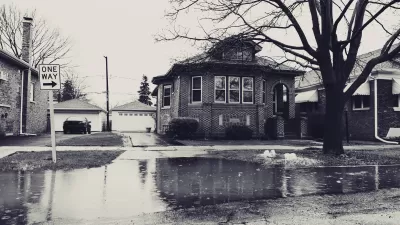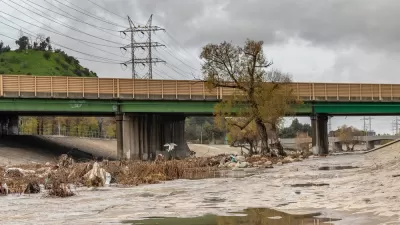A new study reveals that if California could collect and treat more stormwater in cities, it could provide enough water to supply a quarter of the state’s urban population.

Cities across the United States face a range of water challenges, including intensifying impacts of flooding and drought, water scarcity risks, constraints on traditional water supplies facing peak water limits, and water pollution. Innovative ways are needed to address these challenges and improve long-term water resilience.
Stormwater capture is a promising approach. Specifically, It can help narrow the gap between water supply and demand by augmenting and diversifying water supplies. It can also mitigate impacts on communities from intensifying flooding and drought and reduce water pollution. In addition, stormwater capture offers additional co-benefits, such as greening communities and cooling urbanized areas.
As reported by Rachel Becker in this article, a new assessment by the Pacific Institute, in partnership with 2NDNATURE, quantifies the volumetric potential of urban stormwater runoff across the country. The study estimates urban areas have the potential to generate 59.5 million acre-feet of stormwater runoff annually on average. This is equivalent to an annual average of over 53 billion gallons per day. It equals 93 percent of municipal and industrial water withdrawals in 2015, the most recent year with available data.
With respect to California, the analysis found that the Golden State sheds nearly 2.3 million acre-feet of precipitation from pavement, roofs, sidewalks and other surfaces in cities and towns annually. If it were captured and treated, that would be sufficient to supply over a quarter of California’s urban water use or almost 7 million Southern California households each year.
FULL STORY: California’s urban runoff flows down the drain. Can the drought-plagued state capture more of it?

Study: Maui’s Plan to Convert Vacation Rentals to Long-Term Housing Could Cause Nearly $1 Billion Economic Loss
The plan would reduce visitor accommodation by 25,% resulting in 1,900 jobs lost.

North Texas Transit Leaders Tout Benefits of TOD for Growing Region
At a summit focused on transit-oriented development, policymakers discussed how North Texas’ expanded light rail system can serve as a tool for economic growth.

Using Old Oil and Gas Wells for Green Energy Storage
Penn State researchers have found that repurposing abandoned oil and gas wells for geothermal-assisted compressed-air energy storage can boost efficiency, reduce environmental risks, and support clean energy and job transitions.

Santa Barbara Could Build Housing on County Land
County supervisors moved forward a proposal to build workforce housing on two county-owned parcels.

San Mateo Formally Opposes Freeway Project
The city council will send a letter to Caltrans urging the agency to reconsider a plan to expand the 101 through the city of San Mateo.

A Bronx Community Fights to Have its Voice Heard
After organizing and giving input for decades, the community around the Kingsbridge Armory might actually see it redeveloped — and they want to continue to have a say in how it goes.
Urban Design for Planners 1: Software Tools
This six-course series explores essential urban design concepts using open source software and equips planners with the tools they need to participate fully in the urban design process.
Planning for Universal Design
Learn the tools for implementing Universal Design in planning regulations.
Ascent Environmental
Borough of Carlisle
Institute for Housing and Urban Development Studies (IHS)
City of Grandview
Harvard GSD Executive Education
Toledo-Lucas County Plan Commissions
Salt Lake City
NYU Wagner Graduate School of Public Service





























